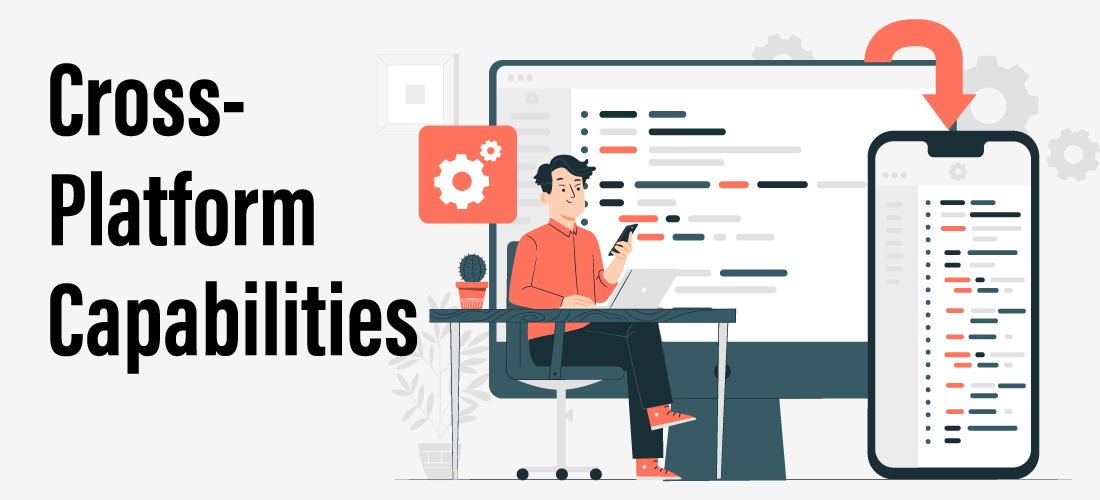Low-Code Development: Businesses must emerge and compete with the digitalization pace in this rising digital world.
Every business, large or small, recognizes the need to digitize its operations.
It may be difficult to address this business need if you use a traditional way.
Low-code development choices may be used by businesses that have begun to include machine learning.
Apart from being simple to use, such alternatives speed up the development process because you don’t have to write the entire code by yourself.
What Is Low-Code Application Development?

Low-code is a software development method that requires little to no coding to create processes and applications.
Despite various coding languages, the low-code app development platform offers visual interfaces with simple logic and drag-and-drop functionality.
Users with no formal experience in software development or coding can create apps for a variety of reasons, including business apps and mobile apps, using such straightforward tools.
Low-code platforms are gaining traction as a simple and quick alternative to traditional software development.
A low-code platform can be used by both ‘citizen’ developers (non-professional developers) and professional developers.
To construct apps of various complexity to meet company demands for development, process automation, and digital transformation.
Low Code or Traditional Coding: What To Choose?
Every business faces a unique set of problems that require distinctive answers.
Traditional development can create custom apps.
But it comes with a high price tag, a longer time to develop, a longer time to market, and frequent maintenance.
As a result, most brands avoid using this method of development.
Low-code development platforms, on the other hand, provide businesses with precise tools for app creation.
It also improves a company’s overall efficiency and productivity.
Let’s look at some additional precise factors to distinguish between traditional coding and low-code.

What Are The Advantages Of Using A Low-Code Platform?
Now that you know what low code is, it’s time to look at the main advantages of using low-code development platforms.
Productivity Improvements
Low-code development platforms make it easier to design complicated systems faster than traditional coding methods, resulting in a significant gain in productivity.
Cost-effective

Pre-defined user interfaces are used in low-code development platforms.
As a result, lower the expense of coding and developing anything that is required regularly.
Furthermore, you would not be obligated to pay expensive maintenance fees.
Furthermore, they eliminate the requirement for an additional crew, resulting in further cost savings.
Better Customer Experience

Expectations from customers are always higher than we anticipate.
Low-code systems are always prepared to adapt swiftly to changing market conditions and client demands.
Additionally, enterprises can employ low-code development platforms to create a whole new portion, modify it, or update it to meet the specific needs of their clients.
What Are Low-Code Platform Features?
Now we’ll look at some of the most important aspects of low-code platforms that will help you create apps.
Tools for Visual Design
You must first assess visual development tools before beginning to construct low-code apps.
Visual development tools are included in all low-code development tools, making it easy to visually link code modules together.
Security
A low-code tool must be secure in addition to being user-friendly and functional.
So, before you start using your low-code platform, make sure it has adequate security to protect the apps you’re developing as well as the platform as a whole.
Scalability
Scalability is also a requirement for low-code systems.
They should be capable of developing new apps to help manage an expanding number of customers as the company expands.
Cross-Platform Capabilities

Once you’ve created anything, you can use it wherever.
With the rise of mobile devices such as tablets and smartphones, apps should be designed with cross-platform capabilities in mind.
It should happen behind the scenes with low-code development, with no additional dosing, effort, or resources required.
Conclusion
So, we hope you’ve learned practically everything there is to know about low-code app development, including the best platforms, perks, and features.
As the low-code trend grows in popularity, now is the moment to turn your company into a successful and effective mobile app.
So, employ a Mobile App Development Company right now and let them create an app that meets your needs.
Read More: THE MOST DISRUPTIVE TREND IN 2021: NO-CODE AND LOW-CODE
























